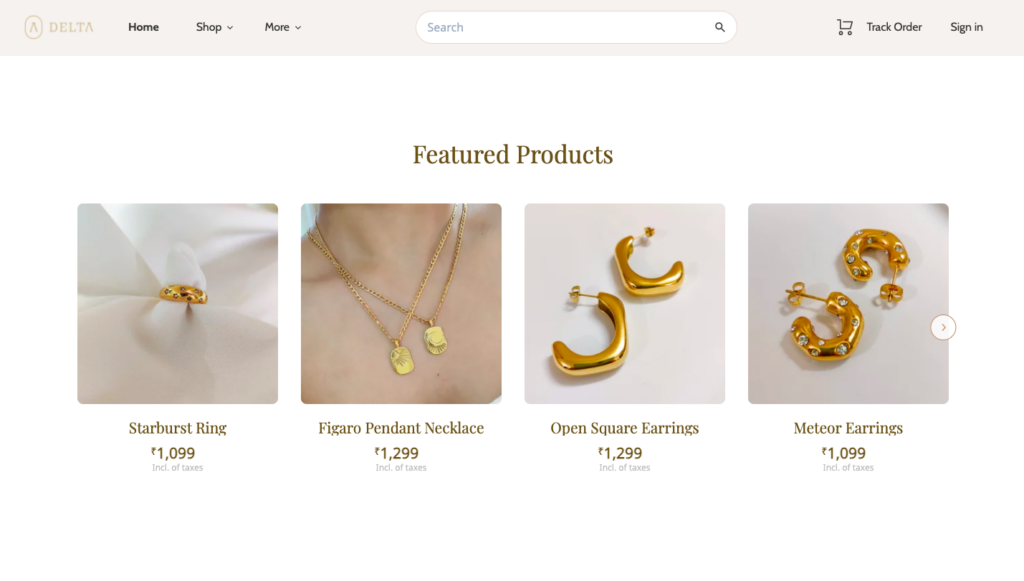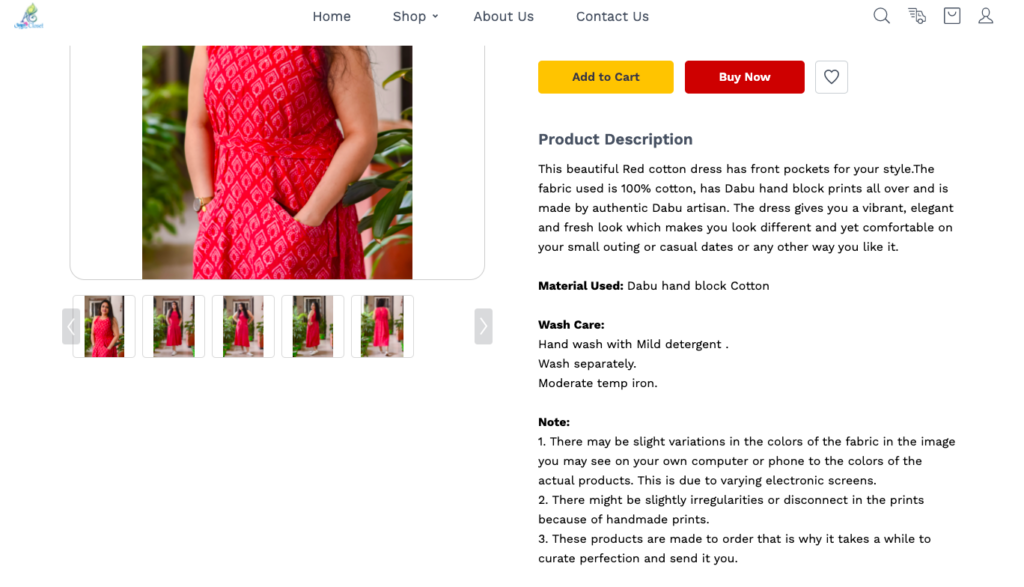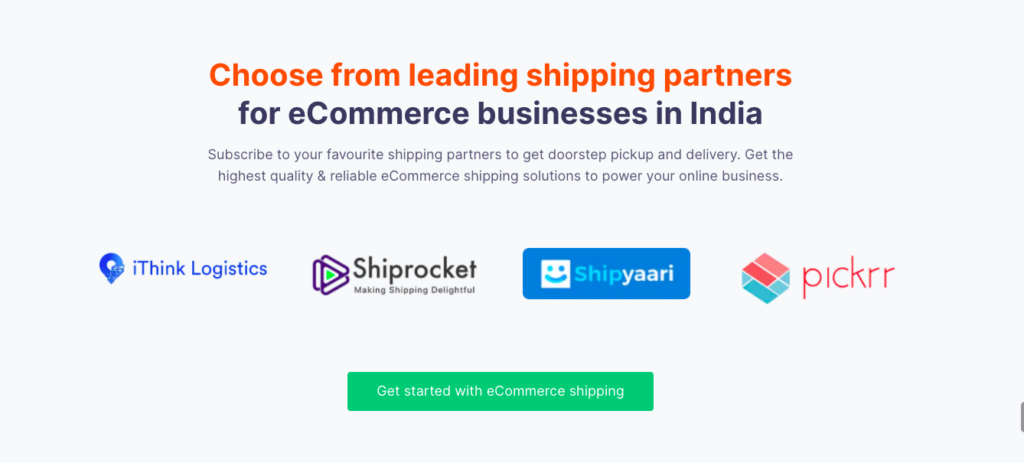Whether you are the neighbourhood Kirana store or a small business selling handmade products, who doesn’t want a wider customer base? Shifting from an offline to an online business can have a wide variety of advantages from higher revenue to more versatile customer touchpoints.
In fact, the pandemic was the biggest proof of how significant digitization could be for the MSME industry.
Already have a physical store but don’t know how to switch to an online presence? Here’s a guide.
Contents
Benefits of shifting your business from offline to online
From the agricultural sector to pharmacies, going online allowed them to continue their business operations and sustain their livelihood. Even though the dangers of covid are now receding, having your own online store/website continues to have a massive potential for your business.
Here are some numbers that can convince you:
- 87% of shoppers like doing online research before shopping
- 97% of consumers find local businesses through online searches
- 9% of the world’s population (and growing!) is now online
- India has the second largest internet user base with close to 933 million people using the internet
- A livemint survey showed 64% of the SMBs that went online were seeing their sales double or increase by five-fold
Delta Charms, a small business selling jewellery on Instamojo saw their sales go up by more than 500% in the past year itself!

Are you hesitating because it is a difficult and exhaustive process? On the contrary, going online can be done in a week, if not a few days.
Getting your own free website can take you less than 5 minutes. Try it out with Instamojo.
Here’s a step-by-step guide when going online with your offline business.
Choosing your eCommerce platform
Since you already have a product that you are ready to sell online, you first need to set up a system in place that helps you. An eCommerce platform can help you with all the functions that your business would need to have an online presence.
You will hence need to first choose an eCommerce platform that will help you with:
- Setting up your website – in other words, your online store
- Integrate payment gateways
- Manage your back and front end so that you don’t have to worry about coding
- Security and privacy
A good eCommerce platform will also have marketing features integrated that will enable your best performance.
Setting up your online business
Now that you have a system in place, it’s time to get your online business up and running.
Choose a domain
Before you can reach out to customers, your online store needs to have a name. For consistent brand awareness online and offline, choose a domain name that is the same as your offline business.
Organizing your products
Thoroughly vet your products when organizing your product catalogue. Some products will be easy to sell online, some will have limitations. For eg: Food items will probably be shipped only to certain locations.
Inventory management
Create a centralised tracker of ALL your products so that you have overall visibility when some products are running low on stock.
Invest in a smart inventory management system. Now that you have an omnichannel business, you will need to keep track of which products are sold online and offline. An IMS will help automate these processes.
Licences and registrations
If your business has the potential of earning more than Rs 40 lakh, then you will have to get a GST registration for your business with the ministry of corporate affairs.
Need help with your business registrations? Enroll in our free course on mojoversity.com.
Getting your online store ready for orders
We seem to be getting quite close to your first online sale. Now that the financial and legal aspects are taken care of, let’s talk about your actual online store. Think of the customer who has reached your online store. Map their customer journey.
Here are some of the things you will have to do to ensure they have a smooth buying experience:
Product images and videos
7 out of 10 buyers will decide whether they want to buy a product online purely based on how it looks in pictures.
Product images and videos need to be of the height possible quality. This does not mean using stock images. The customer should get a realistic sense of what the product would look like when they receive it.
Related read: eCommerce product photography: 7 cost-effective hacks + examples
Product descriptions
Give brief and crisp descriptions of the product so that the customer has all the information they need before purchasing it. Also try to give additional details apart from size and dimensions like use cases, care tips, etc.

User Navigation
Have well-thought-out product pages that clearly define what information the customer will get from that page. Improving the navigation on your online store will allow the customer to reach the product they desire in the shortest clicks possible. If it’s complicated, they will abandon the purchase route.
Home page
Your homepage is like your 24/7 salesperson. It should be neat, and professional. Your content should not have any errors or typos. The call-to-action buttons should be effective and well-placed.
Related read: 9 eCommerce Call to Action examples that see crazy conversions
About us page
This page allows you to tell your own story. Let your customer know who are the faces behind the screen. Knowing who you are and why you do what you let your customers connect to you on a deeper level.
Related read: How to write About Us page for an eCommerce website (Tips + Examples)
Setting up payment methods
As we mentioned earlier, the advantage of selling online is that you can reach customers all over the country, if not the world. But any business transaction needs to have completed successful payments.
You should set up as many payment methods as possible to give your customers the luxury of being able to choose and switch. Look at the main payment methods used by your offline customers and replicate them for your online business.
80% of shoppers from tier 1 and tier 2 cities prefer paying in cash. But these come with a host of challenges, especially if you are a small business.
With an integrated online payment gateway, you can receive payment instantly. Additionally, a secure gateway helps authenticate the shopper and ensures a safe flow of money from the customer’s account to yours.
Ensure the payment gateway you choose is PCI-DSS compliant and has all the necessary qualifications and certifications.
Choosing a shipping service
Apart from starting your website, choosing a shipping service forms an important addition to your online business set-up. In physical spaces, the purchaser usually takes the product home with them instantly after purchase.
Online business is defined by convenience where the products are shipped to the purchase’s chosen address.
You would need reliable shipping partners that ensure fast delivery to all the locations of your existing customer base.
On Instamojo, you can choose from multiple shipping partners and track your product from your dashboard itself.

Let your customers know
For your online store to thrive, customers need to know that it exists. Let’s separate your customer base into two-
Existing customers:
These costumes are already familiar to your physical store and your product. Here are some ways you can let them about your online business:
- Send personalised emails and WhatsApp/texts to your customers informing them
- Give them an exclusive discount for ordering online
- Set up QR codes around your physical store so that walk-in customers can scan them
- Make changes to your thank you note that you give ith the receipt with details of your online store
New customers:
- Have a go-to-market strategy in place which should include:
- Your social media plans
- Your promotional email campaigns
- Partnering with influencers
- Leveraging your existing community
- Creating content in your niche
- Adopt proven SEO practices like updating your keywords, meta tags, sitemap, and link building
- Offer a launch promotion on your website
- Post trendy content to appear on the explorer feed
- Try out targetted ad campaigns with Google or Meta
Now that you have an omnichannel presence, your business is all set to see sky-high revenues!
Take your first online step with Instamojo for FREE.

